Training climbing grip at home will help climbers continue to improve their climbing abilities when they are not able to get to the climbing gym. Unfortunately, most climbers are not able to go to the climbing gym as much as they would like. Therefore, they may be in search of a wide variety of exercise options they can do to improve their climbing grip.
I scoured the internet in search of 10 great exercises to help climbers train their grip at home. While there are many different options available, not everyone will have the necessary equipment to perform them all. You can either pick and choose what exercises to perform or you can get creative with what you use as weights for them!
Forearms are the main muscles used when gripping objects. All good climbing grip exercises will target these forearm muscles. With that in mind, let’s get into it!
Below are 10 exercises to train climbing grip at home.
1. Grip Strength Trainers
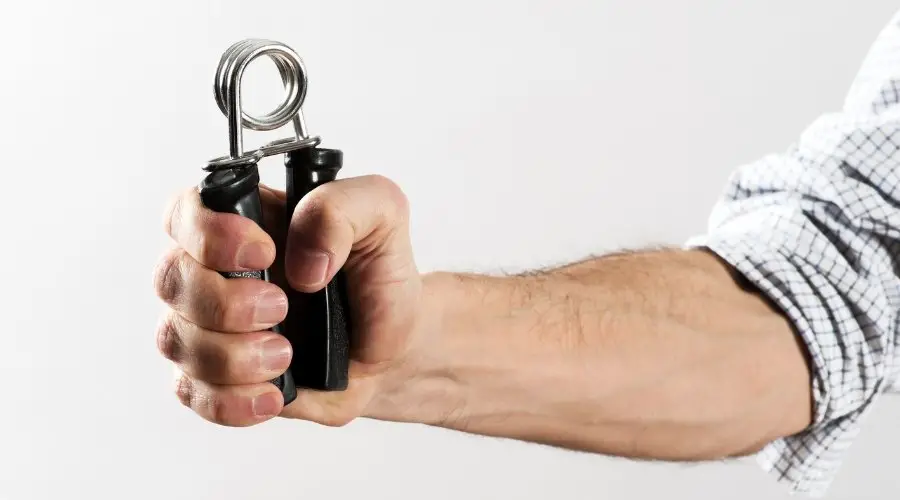
Using a grip trainer is perhaps the most obvious choice of home exercises on this list. I love these because they are very small and portable. Investing in one will allow you to train your grip anywhere you go: at work (on breaks), in your car (while stopped and not driving!), or even while going to the bathroom (preferably not while wiping). You literally can get a forearm workout in anywhere!
You can find my favorite grip strength trainer linked on Amazon here. (it also has the capability to train individual finger strength as well unlike the grip strengthener pictured above!)
2. Pronated Forearm Curls

To do these, sit down and grab a dumbbell in one of your hands. Rest your arm with the dumbbell on a table/chair/stool with your palm facing down towards the ground. If you do not have a resting platform that provides a comfortable height, you can rest your arm on your leg instead. After getting in this position, curl your wrist up.
If you are doing it properly, you will feel the muscles in the outside (top) of your forearm working. Once you have done this with one arm, don’t forget to switch hands and do it for the other!
If you do not have access to dumbbells, here are a few alternatives you could use instead:
- Kettlebell
- Loading a backpack and gripping it’s handle/strap
- Loading a duffle bag or purse and gripping their handles
3. Supinated Wrist Curls
These are very similar to the pronated forearm curls described above. Instead of gripping the weight with your palms facing the ground, you will grip the weight with your palm facing the sky/ceiling. From here, you will curl your wrist towards you. If done properly, you will feel the muscles on the inside of your forearm working.
While dumbbells are the preferred weight of choice, you can use any of the other alternative options listed in the pronated forearm curl section above.
4. Pull-Up Bar Dead Hangs

These are pretty self explanatory. All you do is find a bar and hang from it until you can’t any longer. No pull-ups needed. To make this harder you can either add weight (weight vest, backpack, etc.) or use just one arm to hang.
If you are having troubles finding something to hang from, here are a few ideas:
- Backside of a staircase
- Local public park equipment
- Tree (with sturdy branches of course)
5. Towel Pull-Ups
Using the same bar you can do some towel pull-ups. Pull-ups are good forearm and grip strength exercises on their own even though they primarily focus on increasing back strength. Adding the element of towels changes their focus to be on grip strength rather than back strength (although towel pull-ups will work your back too).
There are two different ways to do these, either using 1 towel or two smaller ones (I prefer the two smaller ones). If you plan to use one towel, drape it over the bar and grab each side of the towel to do your pull-ups. If using two towels, drape both of them over the bar but grab both sides of a towel with one hand and repeat this for the other.
Using the two towel method will generally be more difficult than using the one towel method.
6. Plate Pinch Holds
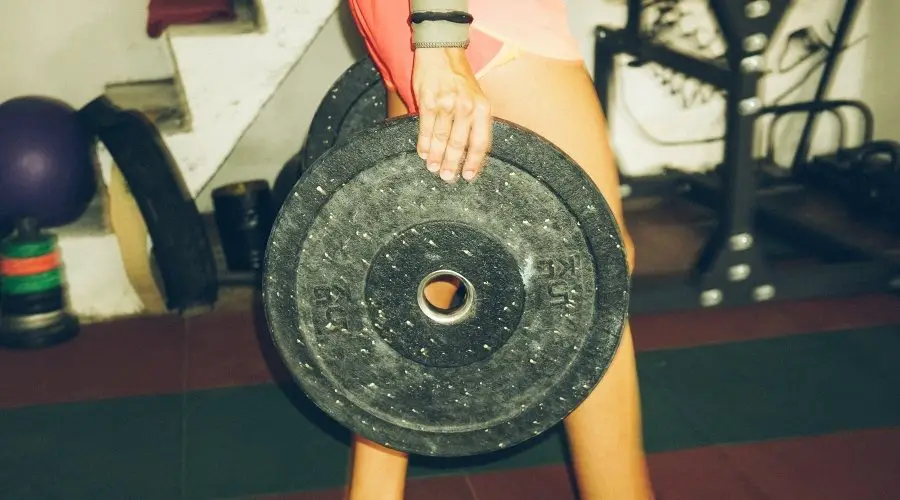
This exercise involves just what it says. Pinching objects until you can’t hold them anymore. To increase the difficulty, you can increase the object’s weight, thickness, slippery-ness, or the duration of time you spend pinching it.
Some alternative options to plates are listed below :
- Brick/cinder block
- Large plank(s) of wood
- Heavy textbooks/binders
7. Farmers Walk
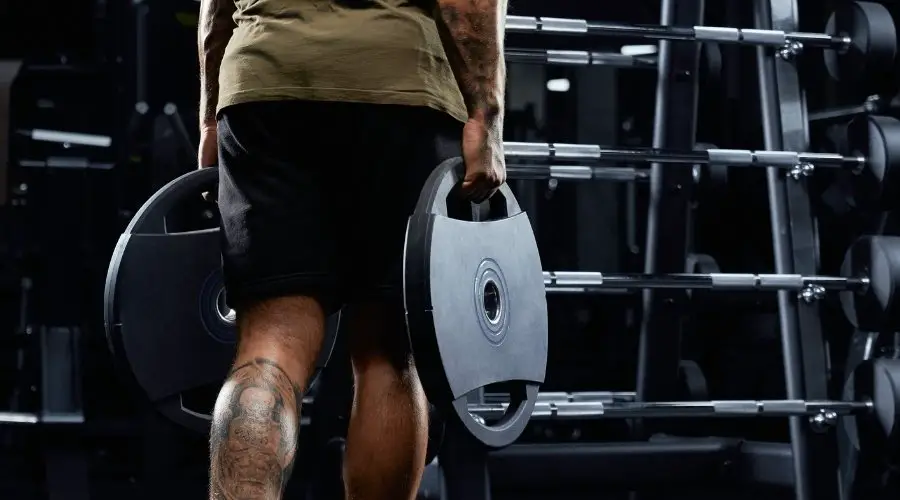
The farmers walk isn’t just a forearm exercise, it will work your traps (upper back) as well. Literally all the farmer’s walk involves is picking up two heavy objects and walking around with them until your grip can’t hold them anymore.
If you are feeling it more in your back and not your grip, I suggest trying to use different objects that are harder to hold. You can even combine this with exercise #6 and use a pinch.
8. Pronated Curls
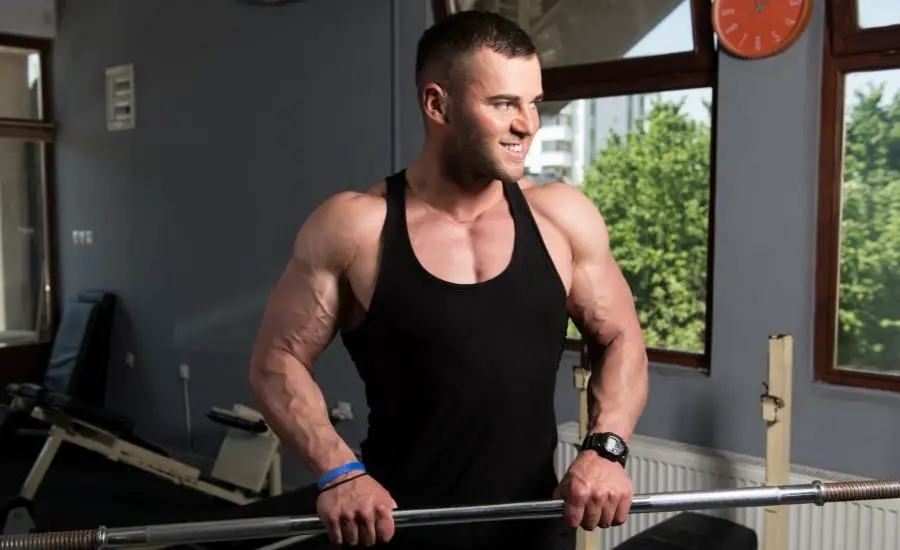
These are very similar to biceps curls but with a 180 twist. Instead of curling the weights with your palms facing you (supinated position), you will curl them with your palms facing away from you (pronated position). This will shift the focus from your biceps to the upper (top) part of your forearm.
9. Behind the Back Grip Crushers
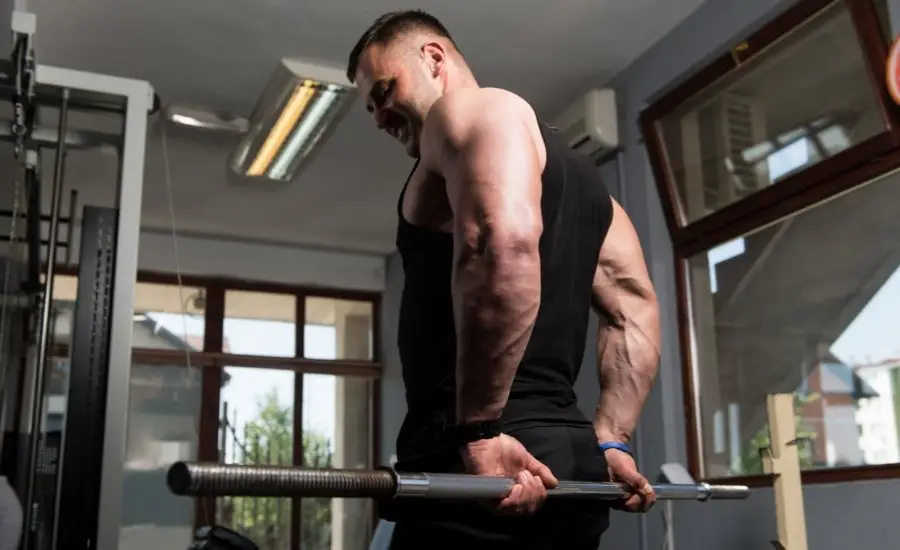
Grip crushers are very different and should not be confused with wrist curls. Grip crushers involve holding the weight in your fingers and closing your hand rather than curling your wrist.
To perform this exercise, stand with a bar/dumbbell behind your back as pictured above. Allow the bar/dumbbell to go towards the ground while it pulls your fingers with it and opens your hand. Once your hands are open, close your fingers back in and make a fist grabbing the bar. Your wrists should not move during the exercise.
Below are a few alternative options if you do not have a bar/dumbbell:
- Broom/mop with weights hanging on it
- Loaded 5-gallon buckets
- Loaded purse/bag
10. Hammer Curls
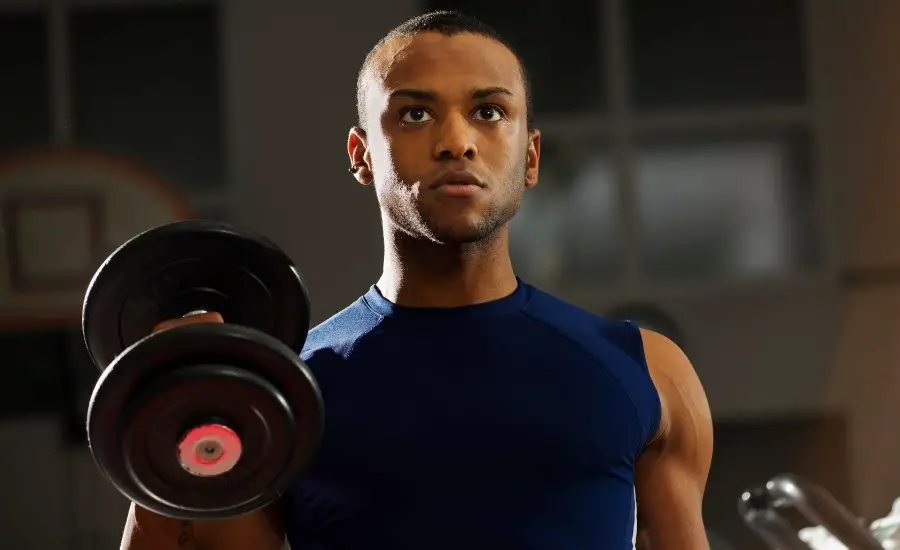
These are much like normal bicep curls but have a small twist (literally). Instead of having your palms facing up (supinated position) you will have them facing in towards each other (neutral position). By rotating your wrists to be in a neutral position, this increases the curl’s emphasis on the forearms instead of its traditional heavy focus on the biceps.
Medical Disclaimer: I am not a doctor and this article is meant for informational purposes only. The information presented in this article is not intended or implied to be a substitute for professional medical advice. Before starting any diet or exercise plan you should always consult a medical doctor.
